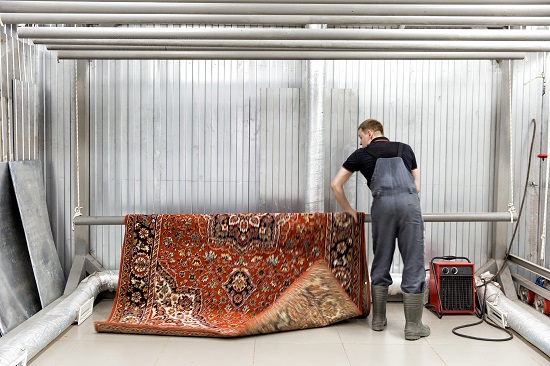Highlights
Bare rental provides the crane only, while operated rental includes a certified operator.
Operated rental ensures safety, compliance, and convenience for complex lifts.
Bare rental offers flexibility and lower costs for experienced teams.
Insurance, liability, and skill level influence which option suits a project best.
Understanding both models helps improve project planning and operational safety.
Understanding Crane Rental Options
When planning a construction project, one of the first decisions regarding lifting equipment involves whether to choose a bare rental or an operated rental. A bare rental means the company rents out the crane only—without an operator. The hiring party must provide a qualified, certified operator to handle the machine. An operated rental, on the other hand, includes both the crane and a professional operator employed by the rental company. This difference affects pricing, liability, safety, and scheduling. According to Rentmas, operated equipment rental is a model where the customer rents the machinery along with a trained operator, which helps clarify responsibilities and reduce risk for the renter.
Key Advantages of Bare Rental
Bare rental can be cost-effective for companies that already employ trained crane operators and rigging crews. Contractors gain full control over operations, scheduling, and staffing. This flexibility is ideal for firms that perform regular lifting work and maintain their own safety standards. Bare rental agreements often last longer, giving companies the ability to move cranes between multiple projects without renewing contracts each time. However, bare rental also means that all maintenance, safety checks, and compliance with OSHA’s 1926 Subpart CC regulations fall entirely on the renter’s responsibility. Teams must handle daily inspections, load testing, and recordkeeping independently.
Benefits of Operated Rental
Operated rental provides a turnkey solution for clients who need both equipment and certified personnel. The crane company supplies an experienced operator who understands lift dynamics, rigging, and local regulations. This arrangement reduces coordination complexity and increases confidence in safety compliance. It’s particularly beneficial for short-term projects, single lifts, or contractors without a dedicated crane crew. This is often the preferred option for complex industrial projects, public infrastructure, or urban job sites with strict permitting requirements.
Cost and Liability Considerations
While bare rentals typically have a lower daily rate, overall costs can add up depending on the project. Contractors must account for operator wages, rigging crews, maintenance, and insurance. Operated rentals, though more expensive upfront, often include these services in a single rate. They also shift risk and liability away from the contractor. In a bare rental, the renter assumes responsibility for any accidents or damages caused during operation. With an operated rental, the crane provider covers insurance and safety compliance. This division of responsibility can be a deciding factor for contractors managing multiple subcontractors or high-risk lifts.
Operational Control and Flexibility
A major advantage of bare rental is operational control. Contractors can schedule lifts, reposition cranes, and coordinate work crews without waiting on a third party. This autonomy improves workflow and reduces downtime when internal teams are already trained and efficient. On the other hand, operated rentals offer greater predictability. The provider manages logistics, transport, setup, and operation according to industry best practices. For contractors handling one-off lifts or unfamiliar job conditions, the operated model eliminates uncertainty and frees project managers to focus on other site priorities.
Project Type and Site Conditions
Choosing between bare and operated rental also depends on project scale and environment. Residential construction projects with moderate lifting needs—such as setting trusses or moving prefabricated panels—can often use bare rental if qualified operators are available. Large commercial and industrial projects typically favor operated rental due to higher safety standards and logistical demands. Complex lifts that require multi-crane coordination, confined site access, or night operations benefit from professional oversight. Weather, terrain, and site layout can also determine whether additional expertise is needed to minimize setup risk.
Insurance and Compliance Factors
Insurance plays a central role in determining the right rental approach. Bare rental clients must carry comprehensive liability coverage that includes heavy equipment operation and property damage. Operated rental agreements, however, usually include insurance from the rental company, covering both equipment and personnel. This arrangement simplifies compliance with OSHA and state-level crane operation requirements. It also ensures that operators maintain active certifications and follow standardized maintenance protocols. For many contractors, this peace of mind outweighs the slightly higher cost of operated rental.
Maintenance and Equipment Readiness
With bare rentals, the renter is responsible for maintaining the crane throughout the contract period. This involves routine lubrication, fluid checks, and pre-lift inspections. Operated rentals, in contrast, arrive on-site fully serviced, inspected, and ready to perform. The rental company’s technicians handle setup, calibration, and testing before every job. This reduces the risk of mechanical failure during lifts. Regular factory-certified maintenance ensures optimal performance and minimizes downtime, particularly for critical lifts where timing and safety are paramount.
Decision-Making for Contractors
Selecting the right rental type should align with a contractor’s resources, crew expertise, and safety culture. Bare rental is ideal for contractors with established crane divisions and skilled operators. Operated rental suits companies that need specialized support or want to reduce administrative overhead. Before finalizing an agreement, contractors should assess their risk tolerance, insurance policies, and training standards. A reputable crane provider can guide clients through the selection process, clarifying the costs, responsibilities, and safety expectations tied to each option.
Industry Trends and Future Outlook
The crane rental industry is evolving with technology-driven innovations and stricter safety standards. Many rental companies now use telematics and remote monitoring to track crane performance, fuel usage, and maintenance needs. These advancements improve transparency for both bare and operated rentals. As more contractors prioritize safety and efficiency, operated rentals are becoming increasingly popular, particularly for large infrastructure and renewable energy projects. However, bare rentals continue to thrive among experienced construction firms seeking cost control and project independence. Both models will remain essential as the industry adapts to new regulations and digital tools that enhance accountability and performance.
Technology Integration and Equipment Advancements
Modern crane rental options increasingly incorporate digital tools that streamline project coordination and safety management. Telematics systems, for example, allow rental companies and contractors to track crane usage, load data, and performance metrics in real time. These insights help verify that lifts remain within rated capacity and that operators follow established safety protocols. For bare rentals, data access allows contractors to schedule preventive maintenance and monitor productivity remotely. For operated rentals, it enhances transparency between project managers and rental providers, ensuring every lift meets compliance standards. As automation and smart sensors become standard in newer crane models, both rental types benefit from reduced downtime and improved operational visibility.
Environmental and Sustainability Considerations
Sustainability has become an important factor in equipment selection and rental strategy. Many crane rental companies are transitioning toward lower-emission engines, hybrid systems, and biodegradable hydraulic fluids to minimize their environmental footprint. Contractors choosing between bare and operated rental can evaluate which option aligns better with their sustainability goals. Operated rentals often come with equipment that meets the latest EPA Tier 4 or EU Stage V emission standards, while bare rental clients may opt for cranes that integrate electric or hybrid power units. Beyond emissions, efficient scheduling and reduced idle time—made possible through coordinated operated rentals—also support eco-friendly project management practices that reduce overall fuel consumption and environmental impact.









